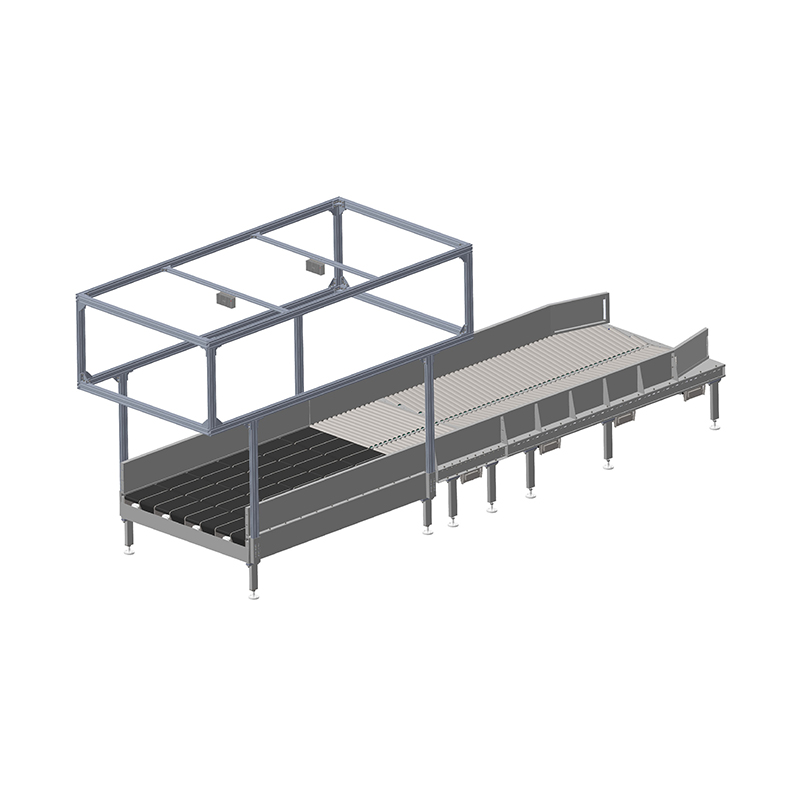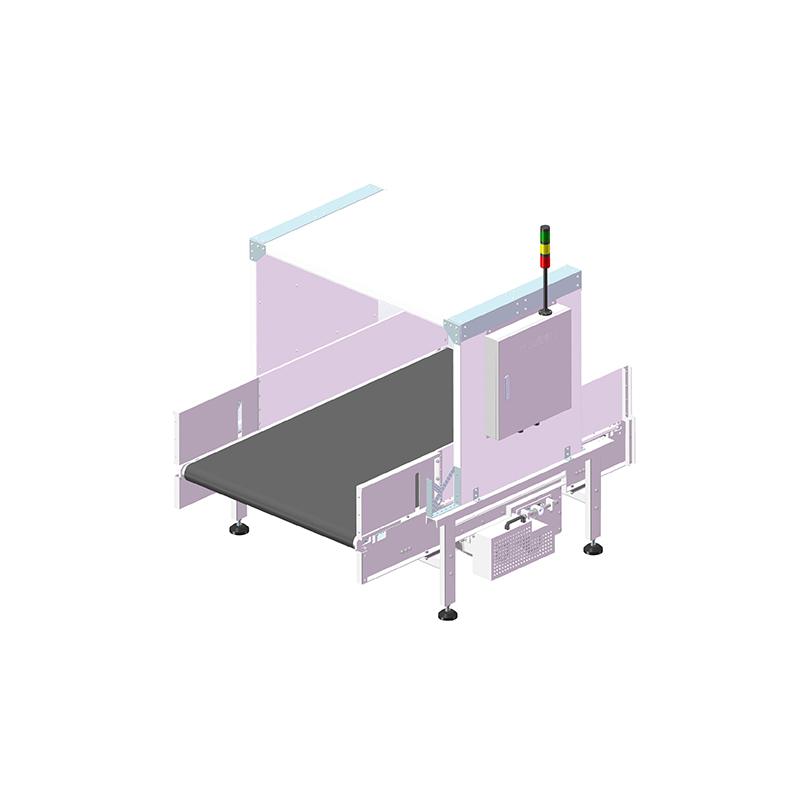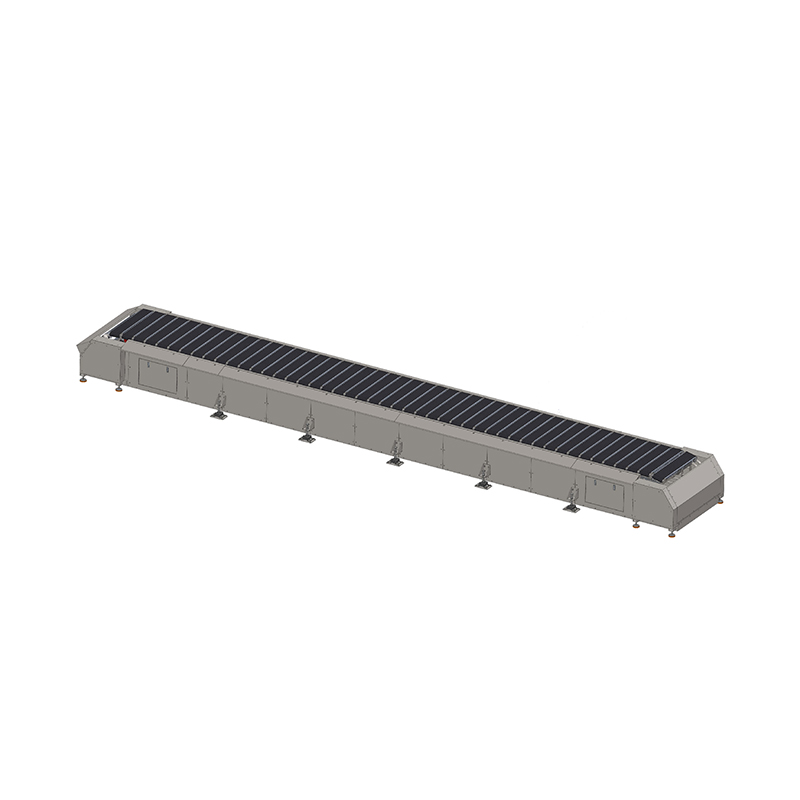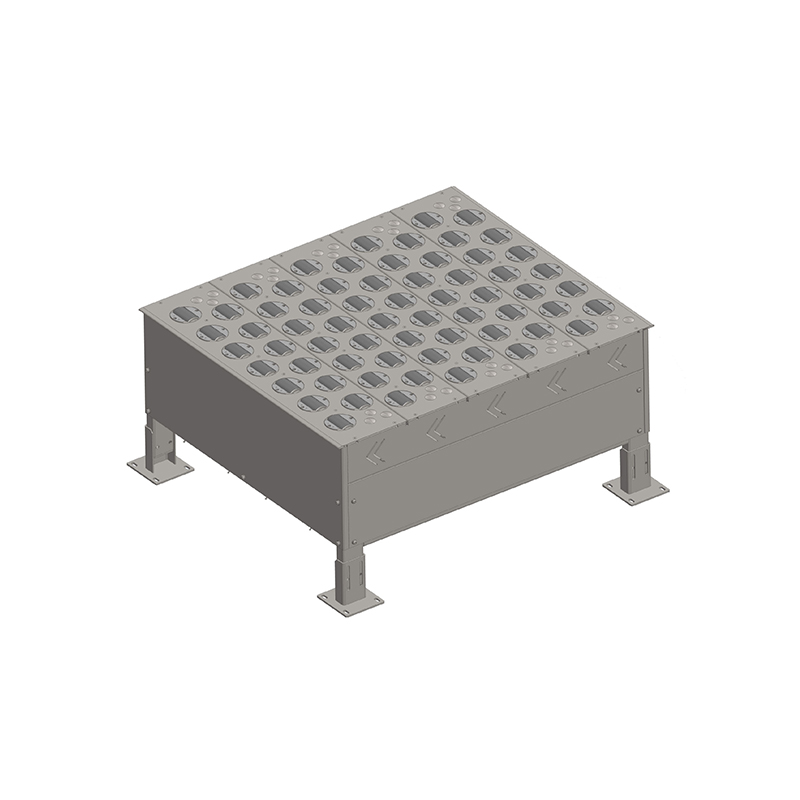Roller Conveyor: A Powerful Assistant For Efficient Logistics
Release Time : 2025-02-12
In modern logistics and manufacturing, roller conveyors, as an efficient and flexible material conveying equipment, play an indispensable role. Whether it is food, beverage, tobacco, medicine, electronics, automobile, or airport, express logistics and other industries, roller conveyors have won universal recognition and favor with their good performance and wide application fields.
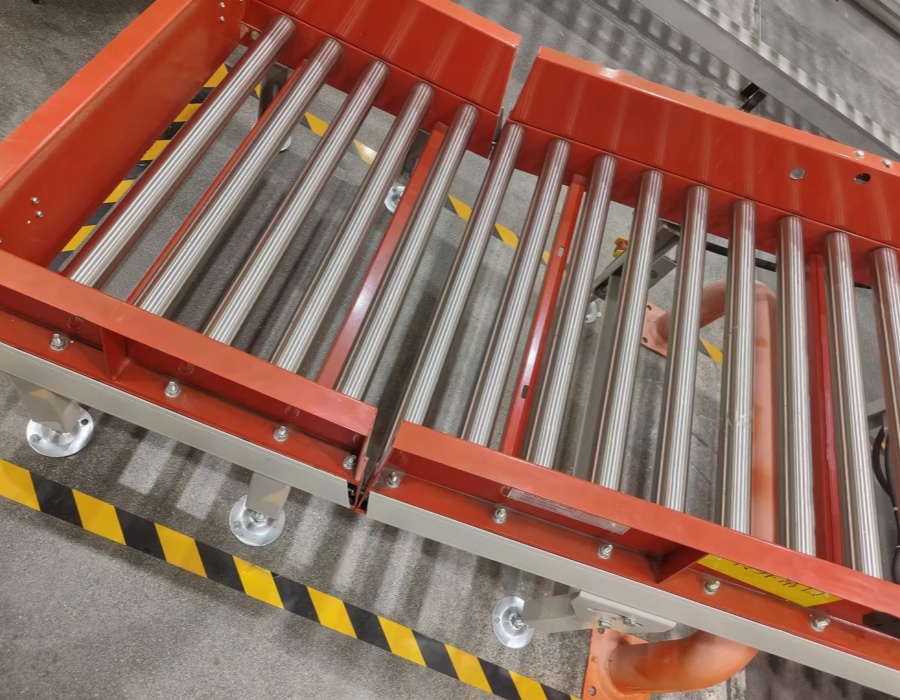
Working principle and structural characteristics
The working principle of the roller conveyor is relatively simple. The motor drive device converts electrical energy into mechanical energy to drive the roller to rotate. There are many rollers mounted on the surface of the roller, and the material is placed between the rollers. When the roller rotates, the material is also pushed, achieving the purpose of conveying. The roller is usually made of metal, has high hardness and wear resistance, and can withstand the pressure and friction of the material. The roller conveyor is mainly composed of a transmission roller, a frame, a bracket, a drive device and other parts. It has a simple structure, high reliability, and is easy to use and maintain.
Roller conveyors can be divided into powered roller lines and unpowered roller lines according to the drive mode; they can be divided into horizontal conveying roller lines, inclined conveying roller lines and turning roller lines according to the layout form. In addition, it can also be specially designed according to customer needs to meet the personalized requirements of various customers. The standard specifications of roller conveyors are diverse. The inner width of the roller line has a variety of options such as 200, 300, 400, 500, 1200mm, etc. The standard inner radius of the turning roller line is 600, 900, 1200mm, etc. The roller diameter used for the straight roller also has a variety of specifications such as 38, 50, 60, 76, 89mm, etc.
Application fields and advantages
Roller conveyors are widely used in the transportation of various types of boxes, bags, pallets and other piece goods. Bulk materials, small items or irregular items need to be placed on pallets or in turnover boxes for transportation. It can transport single pieces of heavy materials or withstand large impact loads. It is easy to connect and filter between roller lines. Multiple roller lines and other conveyors or special machines can be used to form a complex logistics transportation system to meet various process needs.
In the production line, roller conveyors are used for continuous transportation, sorting, caching and packaging of materials; in warehousing logistics, they undertake key tasks such as warehousing, outbound, storage and transshipment of goods. Its high efficiency, strong load capacity and low maintenance requirements make it one of the indispensable infrastructures of modern logistics and manufacturing. Roller conveyors can provide continuous and smooth material transportation, which is suitable for high-speed and high-frequency production and sorting lines, and can significantly improve production efficiency.
In addition, roller conveyors also have the advantages of reduced wear, flexible layout, energy saving and environmental protection, and low noise operation. By placing the material directly on the roller for transportation, the friction between the material and the conveyor belt is reduced, the wear on the material and equipment is reduced, and the service life of the equipment is extended. Roller conveyors can be designed into straight, curved, lifting or cross layouts according to the needs of the production line. They are highly flexible and can adapt to complex production environments and transportation needs. Modern roller conveyors are usually equipped with efficient drive systems and energy-saving motors, with low energy consumption, which helps to reduce production costs and environmental impact. Roller conveyors have low noise during operation, which is especially important for occasions that require a quiet working environment and helps to improve the comfort of the working environment.
Maintenance and technical upgrades
In order to ensure the normal operation and extend the service life of the roller conveyor, regular maintenance is required. This includes checking the wear of rollers and bearings to ensure the normal operation of the equipment; regularly oiling roller bearings and drive devices to reduce wear; cleaning dust and foreign matter on the roller surface and support structure to avoid affecting equipment performance; ensuring proper alignment and tension of the roller to prevent material deviation or damage.
With the development of science and technology, roller conveyors are also undergoing continuous technical upgrades and intelligent transformation. Modern roller conveyors can be equipped with intelligent control systems to achieve automated operation, remote monitoring, real-time data analysis and fault diagnosis. Through the Internet of Things technology, data collection and remote management of equipment can be realized to improve the intelligence and efficiency of the production line. The use of efficient and energy-saving drive systems and motors can further reduce energy consumption and meet modern environmental protection requirements.
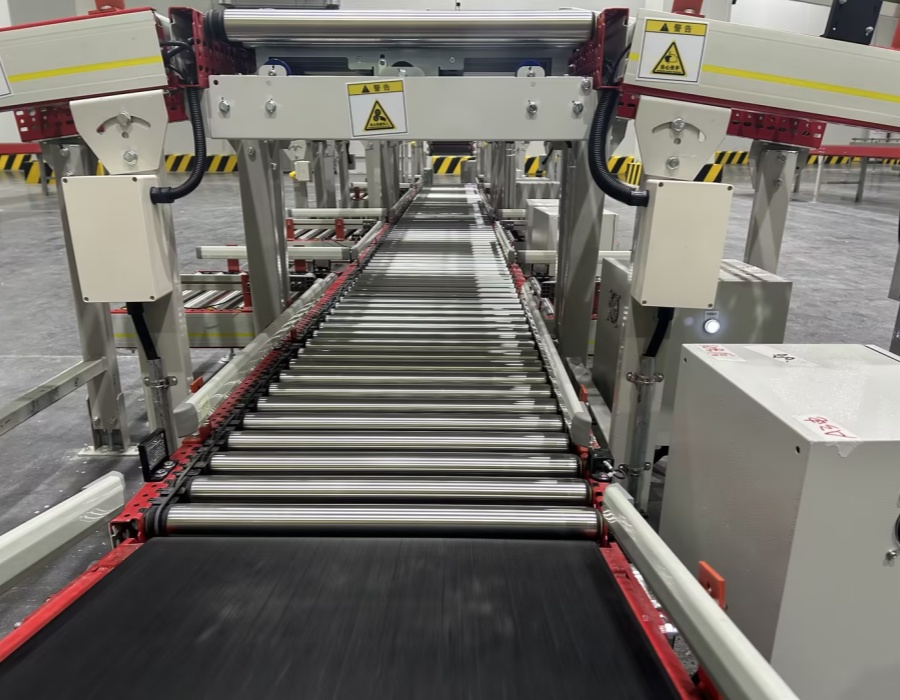
Roller conveyors are widely used in various industrial and logistics fields due to their high efficiency, strong load capacity and low maintenance requirements. Through simplified structure and flexible design, roller conveyors can effectively improve the overall efficiency of the production line. At the same time, through technical upgrades and intelligent transformation, the performance and adaptability of the equipment are further enhanced. In the future, with the continuous development of the logistics industry and the in-depth promotion of intelligent manufacturing, roller conveyors will continue to play an important role and contribute to the development of modern logistics and manufacturing.

Working principle and structural characteristics
The working principle of the roller conveyor is relatively simple. The motor drive device converts electrical energy into mechanical energy to drive the roller to rotate. There are many rollers mounted on the surface of the roller, and the material is placed between the rollers. When the roller rotates, the material is also pushed, achieving the purpose of conveying. The roller is usually made of metal, has high hardness and wear resistance, and can withstand the pressure and friction of the material. The roller conveyor is mainly composed of a transmission roller, a frame, a bracket, a drive device and other parts. It has a simple structure, high reliability, and is easy to use and maintain.
Roller conveyors can be divided into powered roller lines and unpowered roller lines according to the drive mode; they can be divided into horizontal conveying roller lines, inclined conveying roller lines and turning roller lines according to the layout form. In addition, it can also be specially designed according to customer needs to meet the personalized requirements of various customers. The standard specifications of roller conveyors are diverse. The inner width of the roller line has a variety of options such as 200, 300, 400, 500, 1200mm, etc. The standard inner radius of the turning roller line is 600, 900, 1200mm, etc. The roller diameter used for the straight roller also has a variety of specifications such as 38, 50, 60, 76, 89mm, etc.
Application fields and advantages
Roller conveyors are widely used in the transportation of various types of boxes, bags, pallets and other piece goods. Bulk materials, small items or irregular items need to be placed on pallets or in turnover boxes for transportation. It can transport single pieces of heavy materials or withstand large impact loads. It is easy to connect and filter between roller lines. Multiple roller lines and other conveyors or special machines can be used to form a complex logistics transportation system to meet various process needs.
In the production line, roller conveyors are used for continuous transportation, sorting, caching and packaging of materials; in warehousing logistics, they undertake key tasks such as warehousing, outbound, storage and transshipment of goods. Its high efficiency, strong load capacity and low maintenance requirements make it one of the indispensable infrastructures of modern logistics and manufacturing. Roller conveyors can provide continuous and smooth material transportation, which is suitable for high-speed and high-frequency production and sorting lines, and can significantly improve production efficiency.
In addition, roller conveyors also have the advantages of reduced wear, flexible layout, energy saving and environmental protection, and low noise operation. By placing the material directly on the roller for transportation, the friction between the material and the conveyor belt is reduced, the wear on the material and equipment is reduced, and the service life of the equipment is extended. Roller conveyors can be designed into straight, curved, lifting or cross layouts according to the needs of the production line. They are highly flexible and can adapt to complex production environments and transportation needs. Modern roller conveyors are usually equipped with efficient drive systems and energy-saving motors, with low energy consumption, which helps to reduce production costs and environmental impact. Roller conveyors have low noise during operation, which is especially important for occasions that require a quiet working environment and helps to improve the comfort of the working environment.
Maintenance and technical upgrades
In order to ensure the normal operation and extend the service life of the roller conveyor, regular maintenance is required. This includes checking the wear of rollers and bearings to ensure the normal operation of the equipment; regularly oiling roller bearings and drive devices to reduce wear; cleaning dust and foreign matter on the roller surface and support structure to avoid affecting equipment performance; ensuring proper alignment and tension of the roller to prevent material deviation or damage.
With the development of science and technology, roller conveyors are also undergoing continuous technical upgrades and intelligent transformation. Modern roller conveyors can be equipped with intelligent control systems to achieve automated operation, remote monitoring, real-time data analysis and fault diagnosis. Through the Internet of Things technology, data collection and remote management of equipment can be realized to improve the intelligence and efficiency of the production line. The use of efficient and energy-saving drive systems and motors can further reduce energy consumption and meet modern environmental protection requirements.

Roller conveyors are widely used in various industrial and logistics fields due to their high efficiency, strong load capacity and low maintenance requirements. Through simplified structure and flexible design, roller conveyors can effectively improve the overall efficiency of the production line. At the same time, through technical upgrades and intelligent transformation, the performance and adaptability of the equipment are further enhanced. In the future, with the continuous development of the logistics industry and the in-depth promotion of intelligent manufacturing, roller conveyors will continue to play an important role and contribute to the development of modern logistics and manufacturing.


